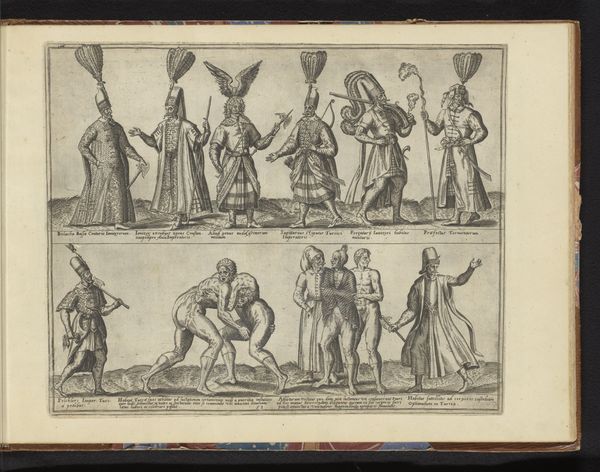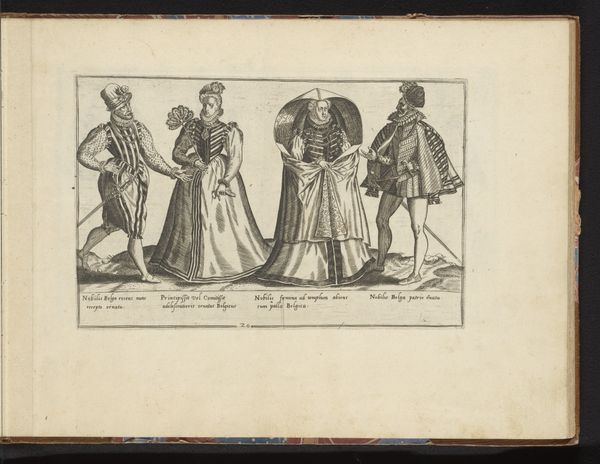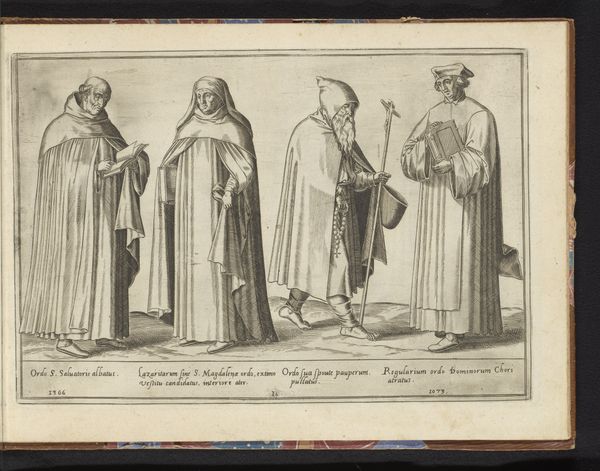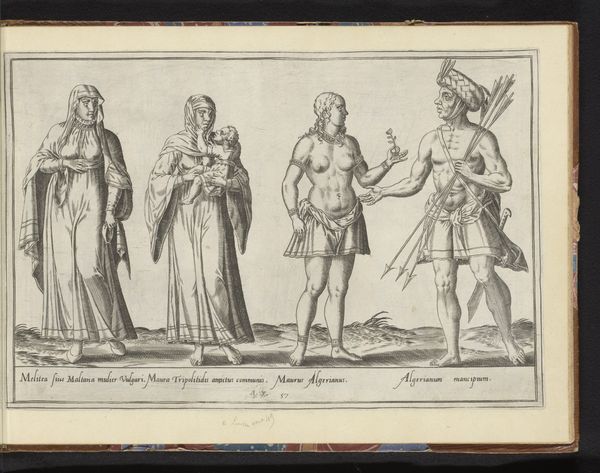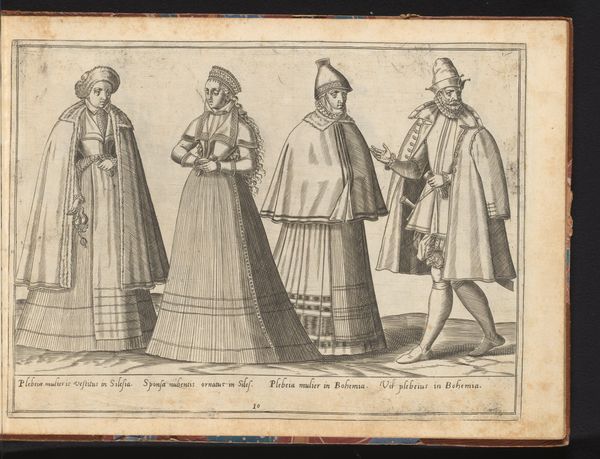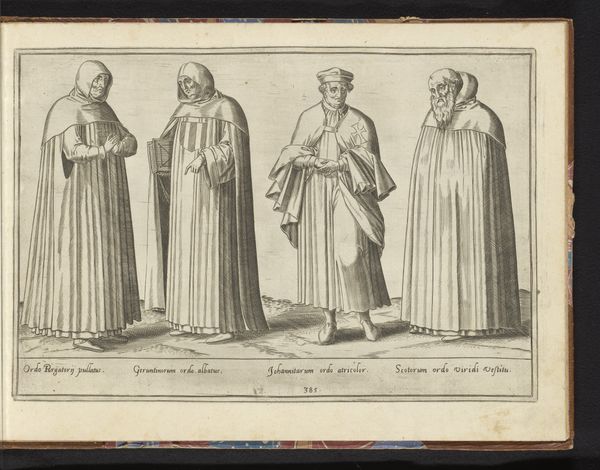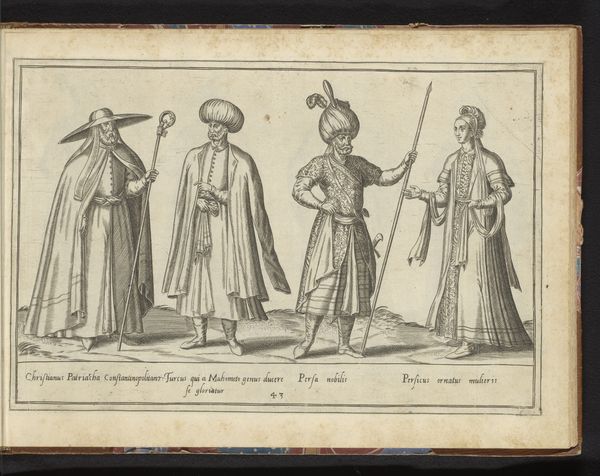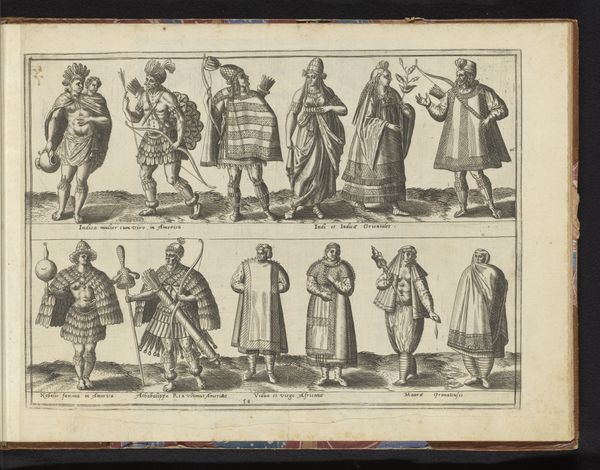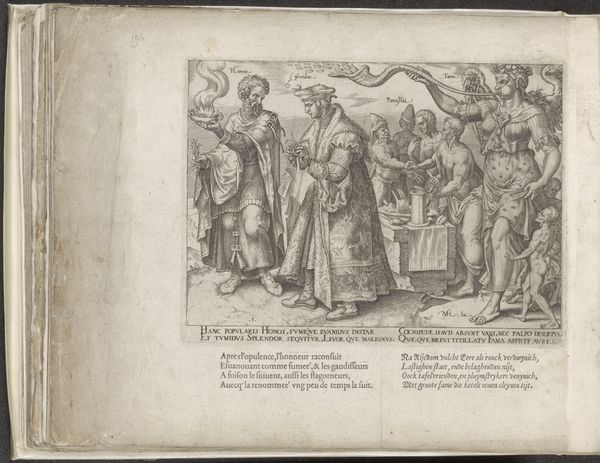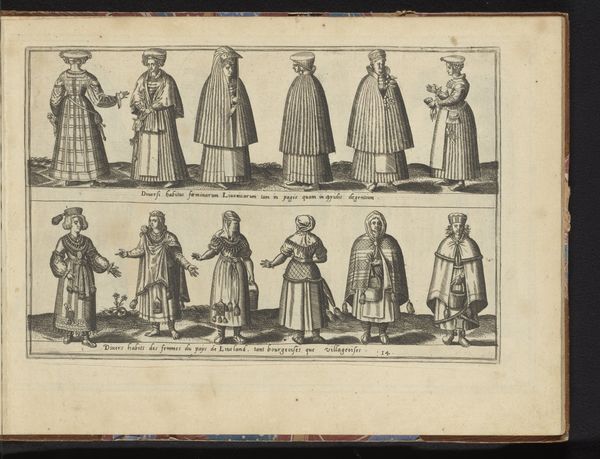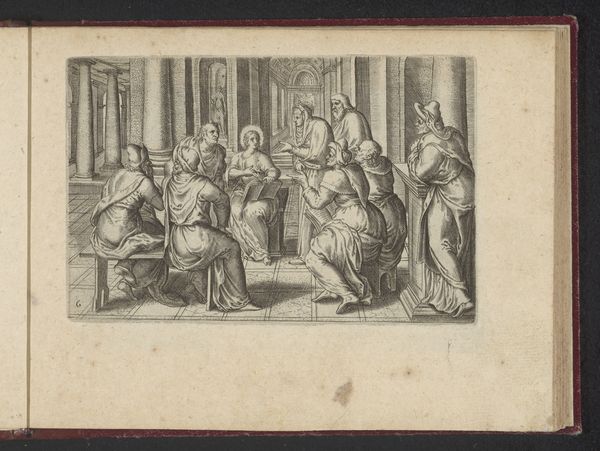
Drie Hollanders, een Vlaming en een Engelsman, gekleed volgens de mode van ca. 1580 before 1581
0:00
0:00
print, engraving
#
portrait
#
aged paper
#
toned paper
# print
#
pen sketch
#
sketch book
#
figuration
#
11_renaissance
#
personal sketchbook
#
pen-ink sketch
#
pen work
#
sketchbook drawing
#
history-painting
#
storyboard and sketchbook work
#
northern-renaissance
#
sketchbook art
#
engraving
Dimensions: height 265 mm, width 360 mm
Copyright: Rijks Museum: Open Domain
Curator: This print, "Drie Hollanders, een Vlaming en een Engelsman, gekleed volgens de mode van ca. 1580," by Abraham de Bruyn, made before 1581, offers a fascinating snapshot of societal presentation. What catches your eye about it? Editor: It’s interesting to see these figures lined up, almost like a catalogue. Given that it's a print, made using engraving, I'm wondering how it circulated and what its purpose might have been back then. What’s your interpretation of the work? Curator: For me, the critical entry point lies in the production of this print itself. Engravings like these were relatively easily reproducible. Think about how the distribution of these prints would impact fashion and cultural identities across different regions. The material reality of disseminating images changes everything. Consider how the clothing, as presented, functioned not just as covering, but as signifiers within a burgeoning consumer culture. Does it seem likely this print informed fashion trends, or merely documented them? Editor: It probably did both. Showing different national styles likely sparked interest and desire. Were these prints affordable? Would tailors and merchants use them as templates? Curator: Exactly. And the materials – paper, ink, the engraver’s tools, and the labour required to produce the plate itself – are often overlooked. These elements underscore the burgeoning commodity culture of the late 16th century. What do you think about the function of prints versus hand-painted portraits during this time? Editor: I never really thought of art like that! So the print acts as a commodity itself but also advertises other commodities, like the clothing. It seems the work gives more value to these men depending on their clothes, like social class. Curator: Precisely. By thinking about the conditions of its production, the networks of distribution, we get a much richer understanding of the social and economic realities of the period. It challenges traditional notions of the artist as sole genius, bringing focus back on the material world that enabled its existence.
Comments
No comments
Be the first to comment and join the conversation on the ultimate creative platform.
